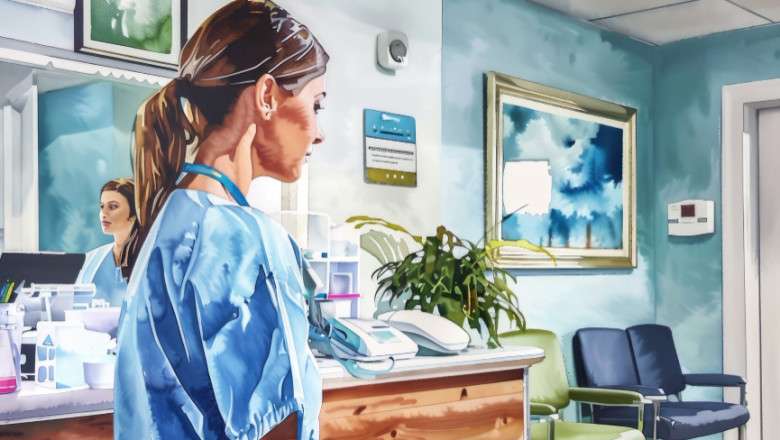views
Enhancing Clinical Documentation and Administrative Tasks
One of the most significant impacts of speech and voice recognition technology is in automating clinical documentation. Solutions like Dragon Medical One and other AI-powered voice recognition tools enable healthcare providers to dictate patient notes, diagnoses, and treatment plans directly into electronic health records (EHRs). This not only saves time but also reduces administrative burdens, allowing clinicians to focus more on patient care.
By eliminating the need for manual entry, speech recognition reduces errors and ensures more accurate and comprehensive patient records. This is particularly important in a fast-paced healthcare environment where precision is critical to ensuring patient safety.
Improving Patient-Provider Communication
Speech and voice recognition in healthcare facilitates better communication between patients and providers, especially in telemedicine. Virtual care platforms equipped with voice recognition technology enable real-time transcription of conversations, ensuring that critical details are captured accurately. For non-native speakers or patients with hearing impairments, integrated AI-driven translation and transcription features make healthcare more accessible and inclusive.
Advancing Diagnostic and Monitoring Capabilities
Speech and voice recognition technology is also being used to monitor and analyze patients' vocal patterns for early diagnosis of conditions such as Parkinson’s disease, Alzheimer’s, or even mental health issues like depression. AI integration allows these systems to detect subtle changes in speech that may indicate underlying health problems, enabling early intervention.
Moreover, voice-enabled devices and virtual assistants, like Amazon Alexa or Google Assistant, are being integrated into patient care, offering medication reminders, symptom tracking, and health tips, thereby promoting patient engagement and adherence to treatment plans.
Supporting Healthcare Trends like Telemedicine
Telemedicine has become a cornerstone of modern healthcare, especially post-pandemic. Speech and voice recognition technology enhances telemedicine platforms by providing features like automated transcription, real-time language translation, and voice-activated commands. This not only improves the patient experience but also ensures that remote consultations are well-documented and compliant with regulatory standards.
Challenges and Considerations
While the benefits of speech and voice recognition in healthcare are substantial, challenges remain. Ensuring data security and patient privacy is paramount, especially with sensitive health information being processed by these systems. Additionally, the technology must be fine-tuned to handle medical terminology accurately and adapt to diverse accents and dialects for widespread adoption.
Conclusion
Speech and voice recognition technology is transforming healthcare by improving efficiency, reducing administrative workloads, and enhancing patient engagement. With advancements in AI integration and the growing adoption of telemedicine, this technology is poised to become an indispensable tool in the modern healthcare landscape. As the industry continues to innovate, speech and voice recognition will play a critical role in shaping a more efficient, accessible, and patient-centric healthcare system.
Latest Healthcare Market Research Reports:
Undifferentiated Pleomorphic Sarcoma Market | Audiology Devices Market | Ductal Carcinoma In Situ Market | Hemodynamic Monitoring System Market | Synchronous Endometrial And Ovarian Carcinoma Market | Acute Pyelonephritis Market | Adeno-associated Virus Aav Vectors In Gene Therapy Market | Adenosine Deaminase-severe Combined Immunodeficiency Market | Cell And Gene Therapy For Multtiple Myeloma Market | Chemotherapy Induced Nausea And Vomiting Market | Crows Feet Market | Desmoplastic Small Round Cell Tumors Dsrcts Market






















Comments
0 comment